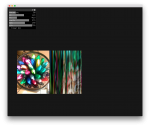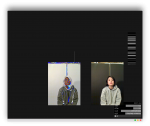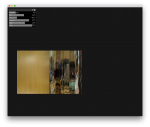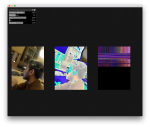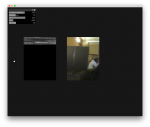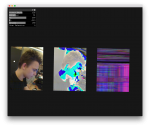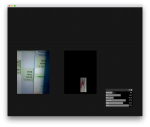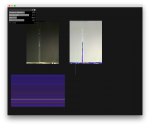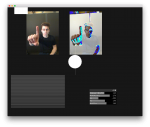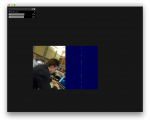For my portrait I used a live-image slit-scanner controlled via a custom OF App and the Griffen PowerMate to capture images of fourth. This blog post describes my project in three steps:
- What Happened: My Process
- What Resulted: The Portraits
- What (could be) Next: Areas for Future Research
Process
Near the beginning of my exploration into machine-based portrait capture, I read Golan’s overview of Slit-Scanning and started thinking a lot about how differently artists had approached the simple rudiment of assembling a series of captured slits. For my project, I didn’t want to create a new one of these approaches for my portrait subject, fourth, as much as create a machine that would allow an artist to create their own algorithm physically. To enable the creation of this portrait machine, I worked with a jog-wheel Human-Interface Device called the Griffen PowerMate (controlled via ofxPowerMate), which would paint slits to the right of the starting location when turned clockwise, and to the left when turned counter-clockwise.
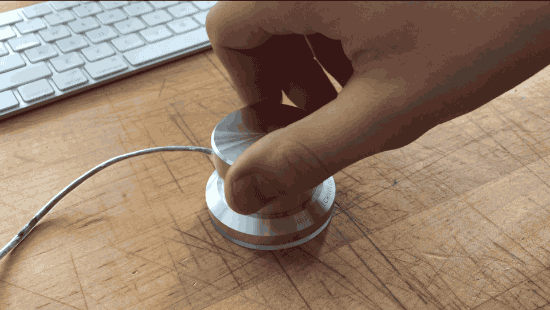
In effect, this allows an artist to craft custom-slit-scan works with a high degree of personal expression and control. In the below video, you can see me painting in fourth’s portrait using the custom OF app I created for this project.
Video of OF App Working
Capture Setup
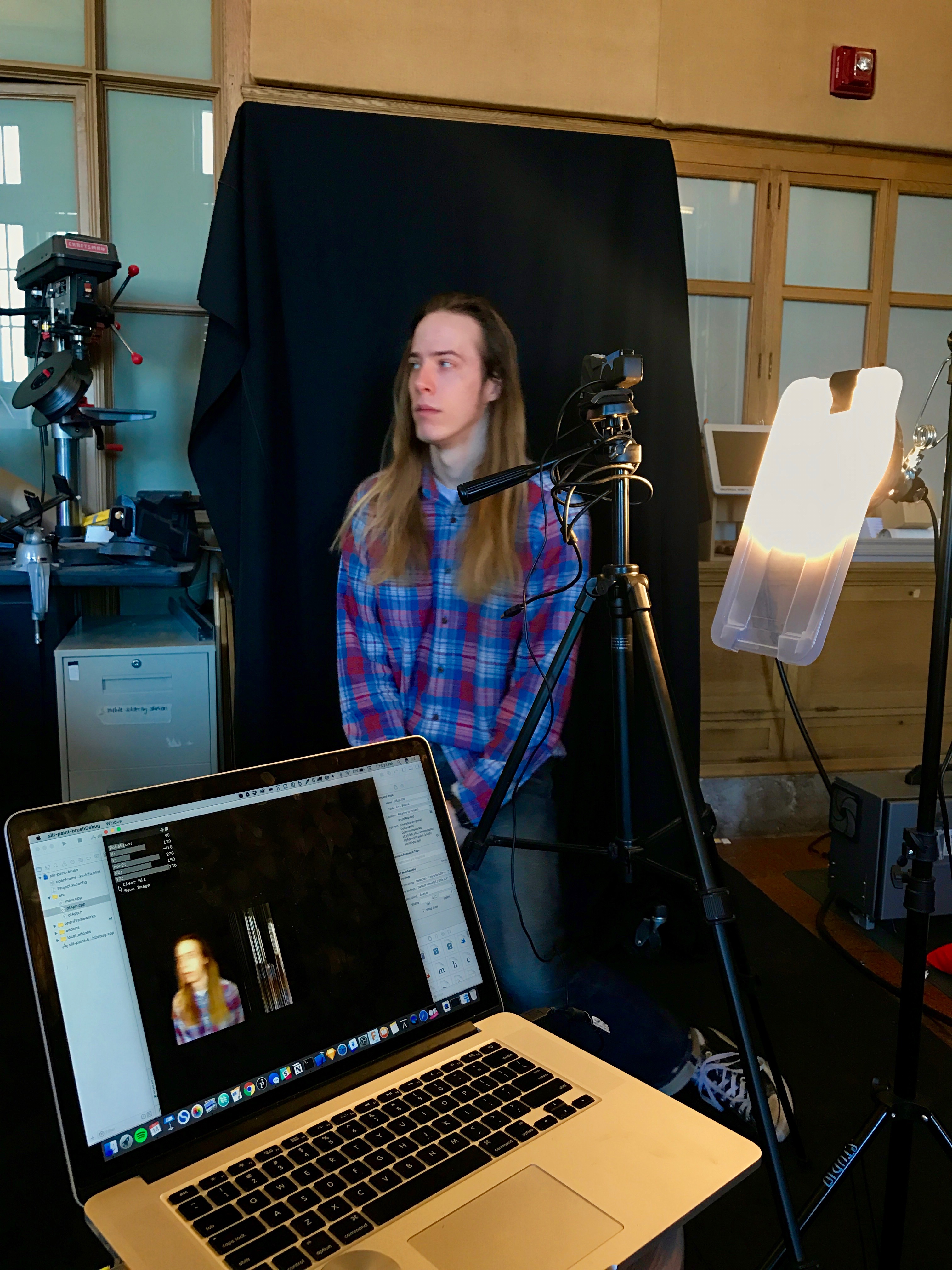
More Software Iterations
Portraits
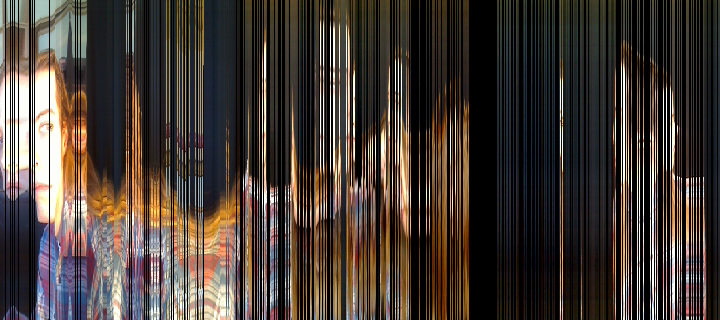
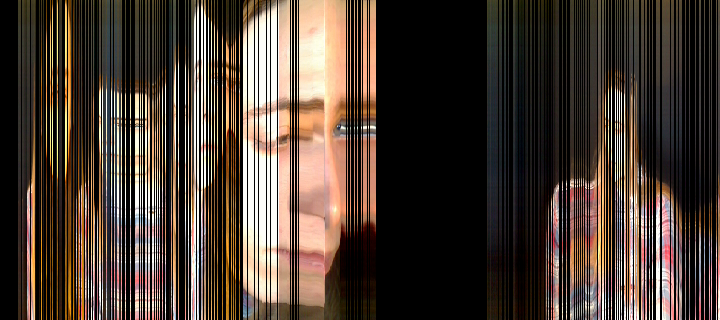
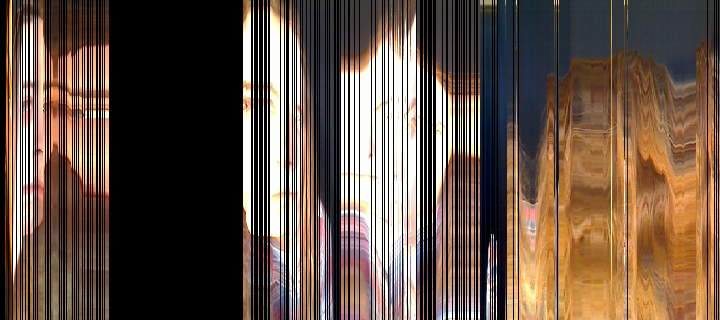
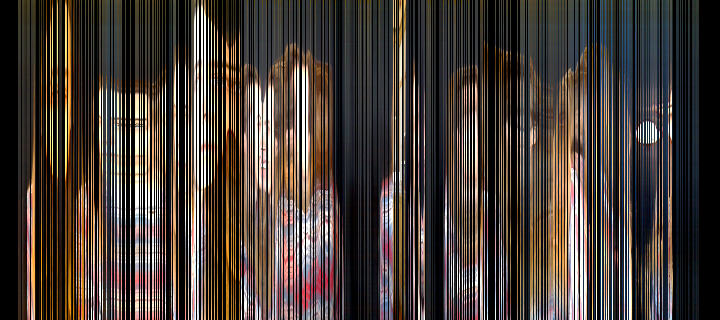
Other Portraits (Still Developing)
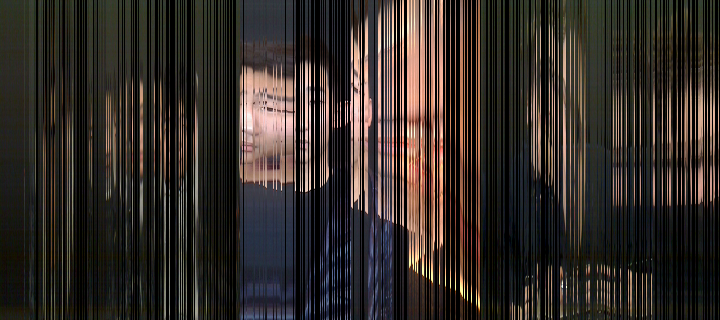
Future Directions
Though my capture system works, I believe there’s significant room for future improvement. Going forward, I’ve been thinking about a number of areas where I could iterate this project:
- Extend the functionality beyond just placing a captured slit, to include the ability of choosing where the slit is captured from (currently, it is always captured from width/2).
- Experiment with more continuous blurring between captured states instead of just leaving the blank bars (which adds an glitch aesthetic to the scans).
- Work on improving the capture & paint playheads to better communicate what the software is doing.
- Someone in my review pod mentioned the IO Brush, I think it would be interesting to look into this more.
- Investigate the notion of transcompiling the OF application to iOS and shifting from the wheel as creative input to some version of touch interface.
- Slit-scanning often has a ‘glitchy quality’, in part due to the low resolution that it is normally captured at. I may explore a way to hook up a high resolution DSLR-quality camera to work towards a more professional look.
